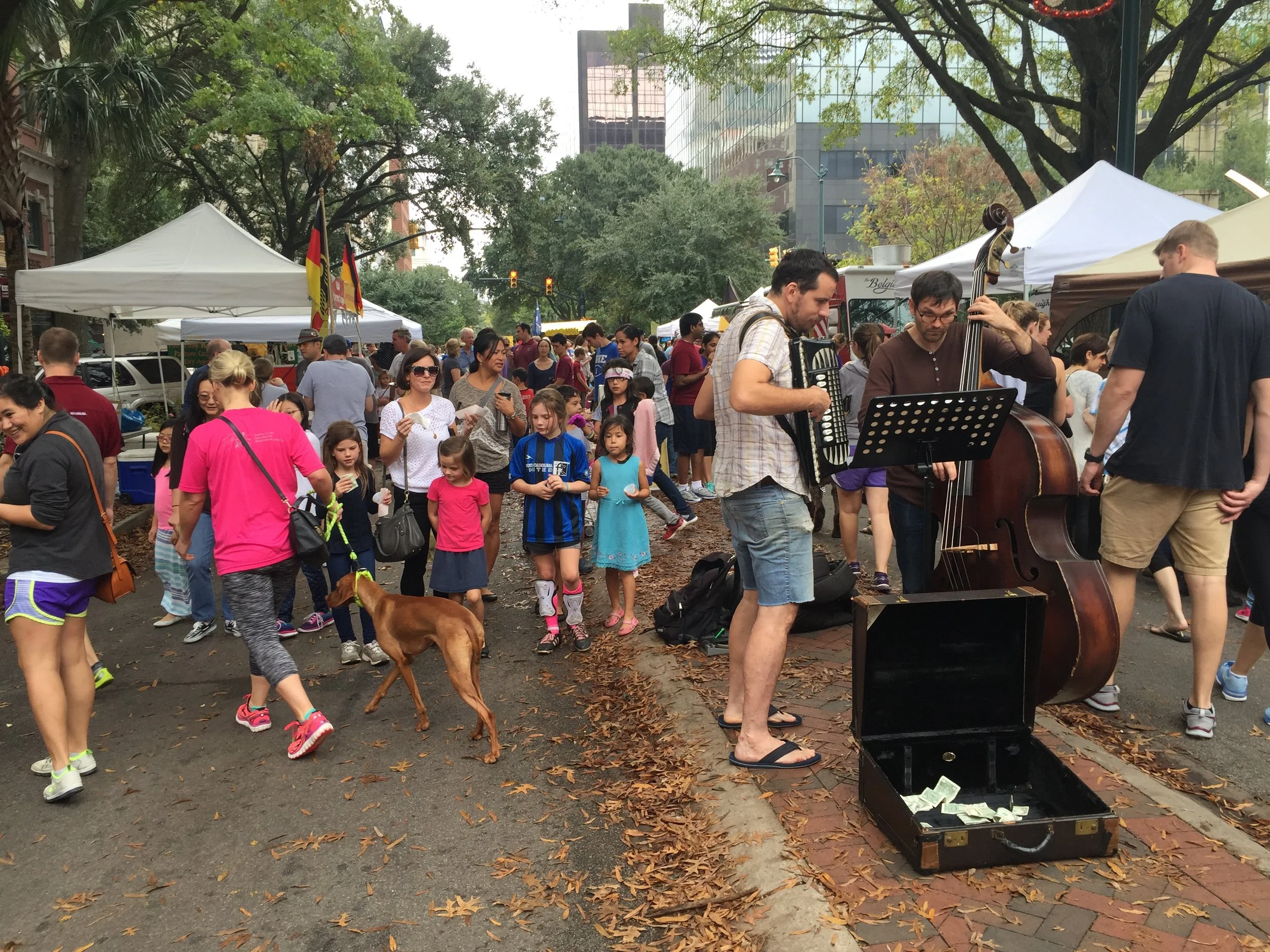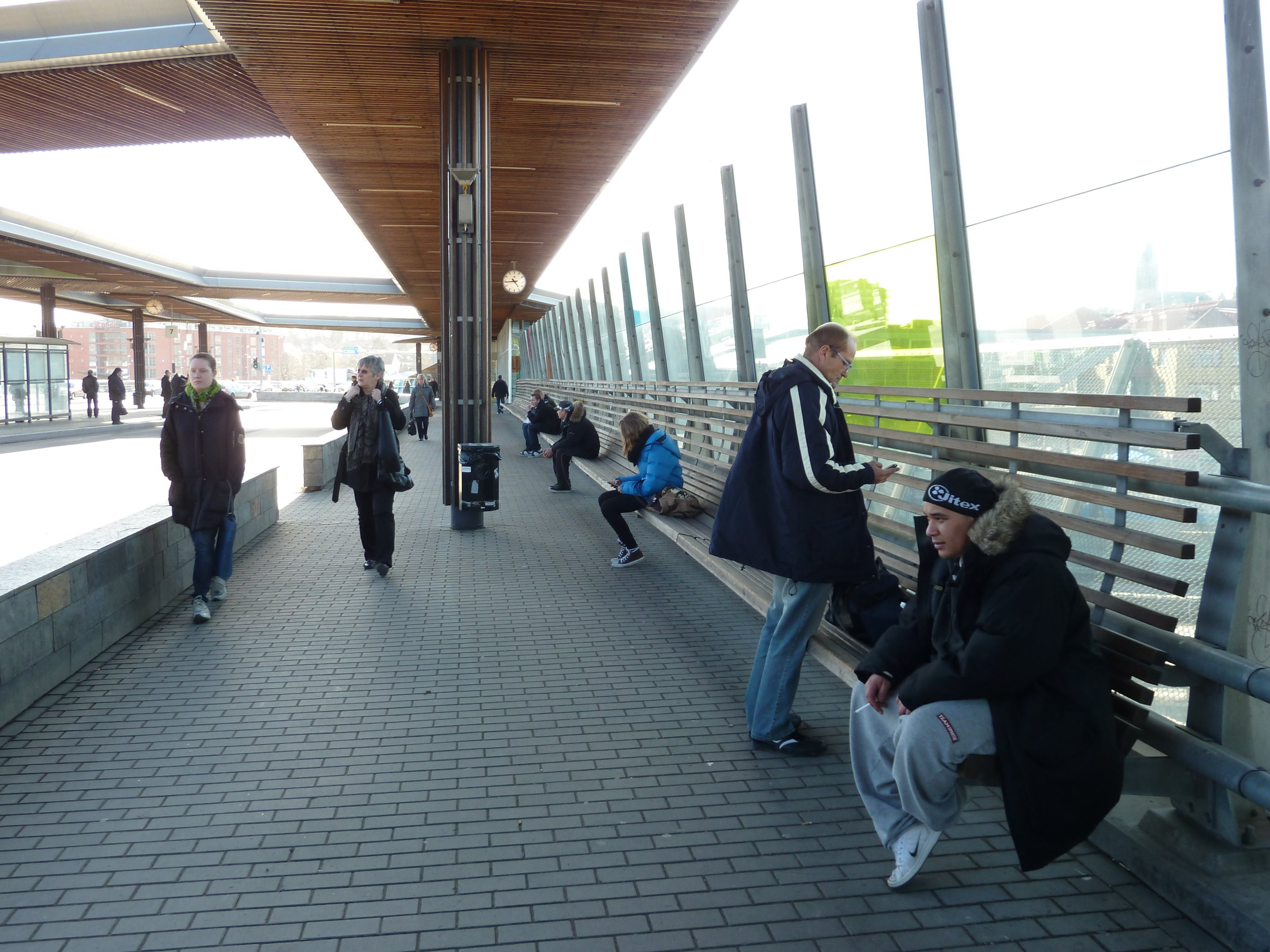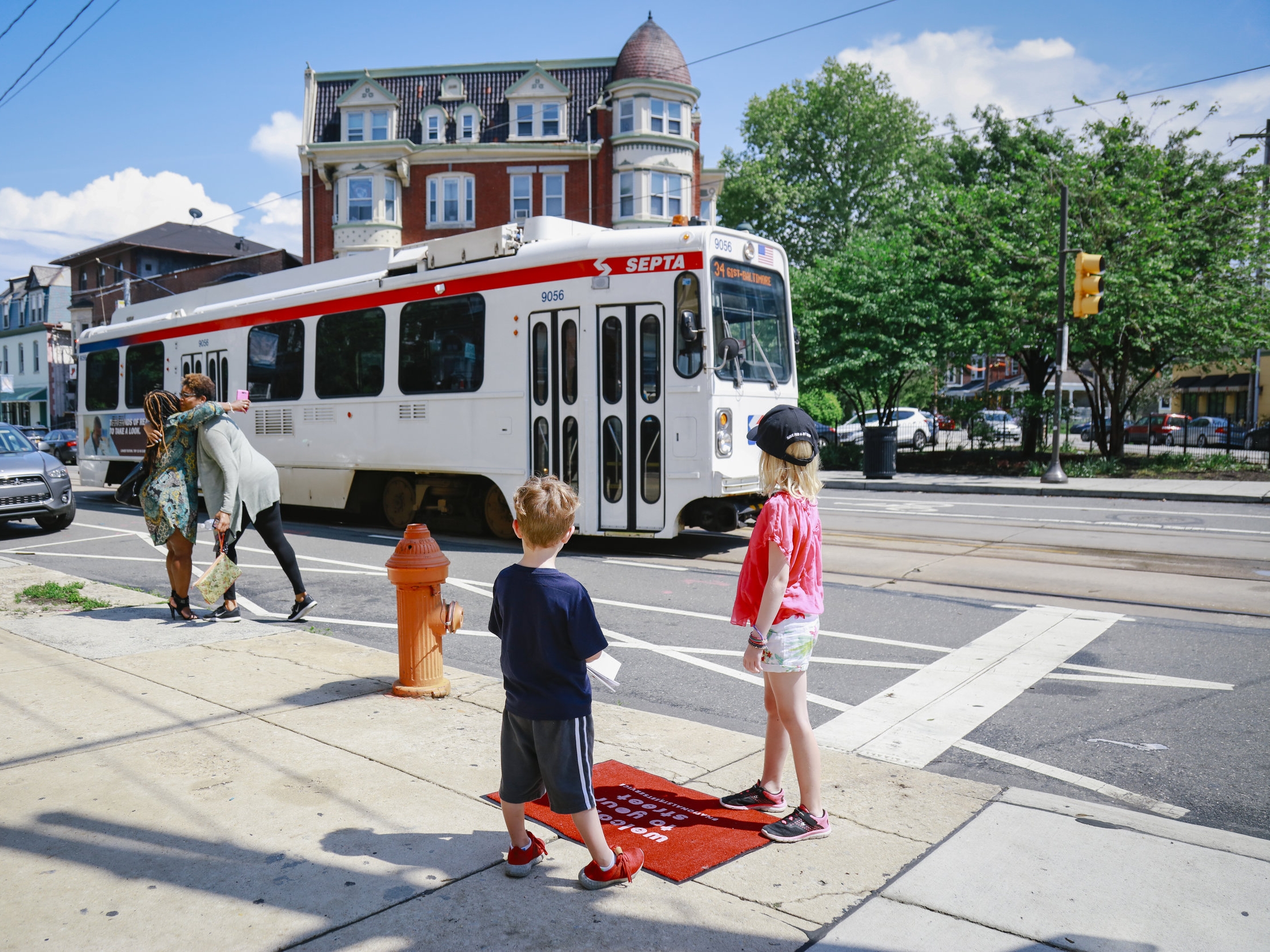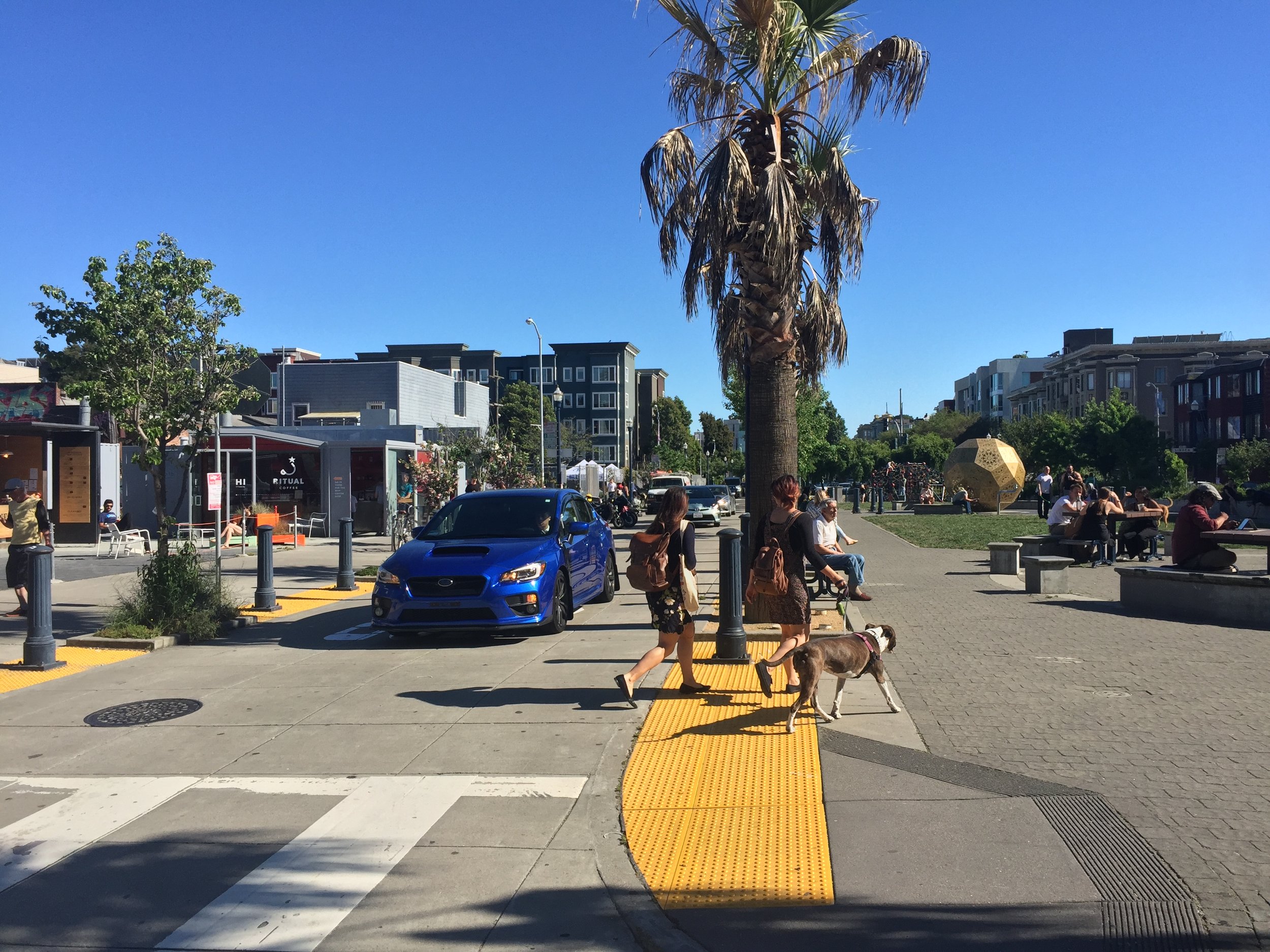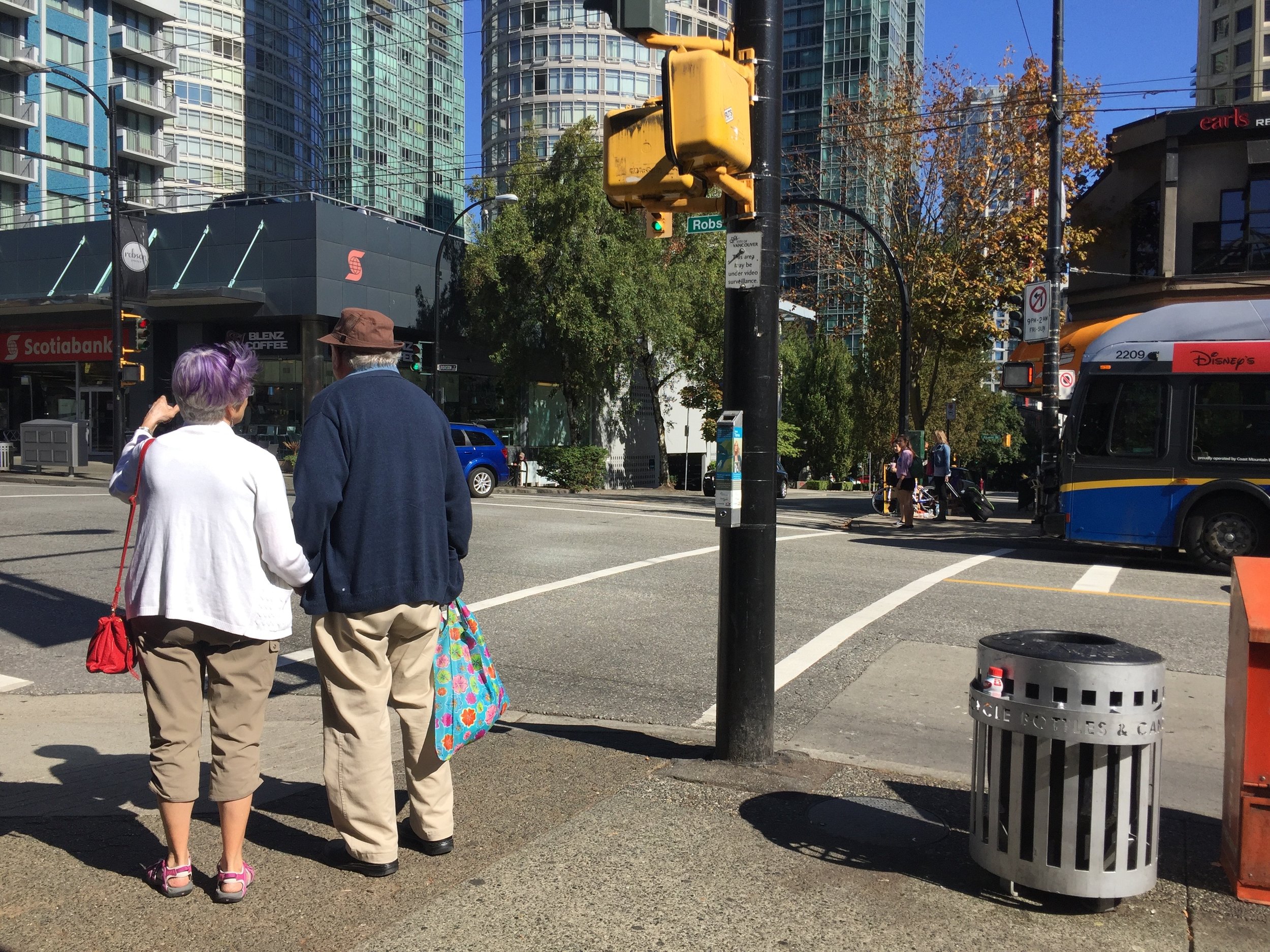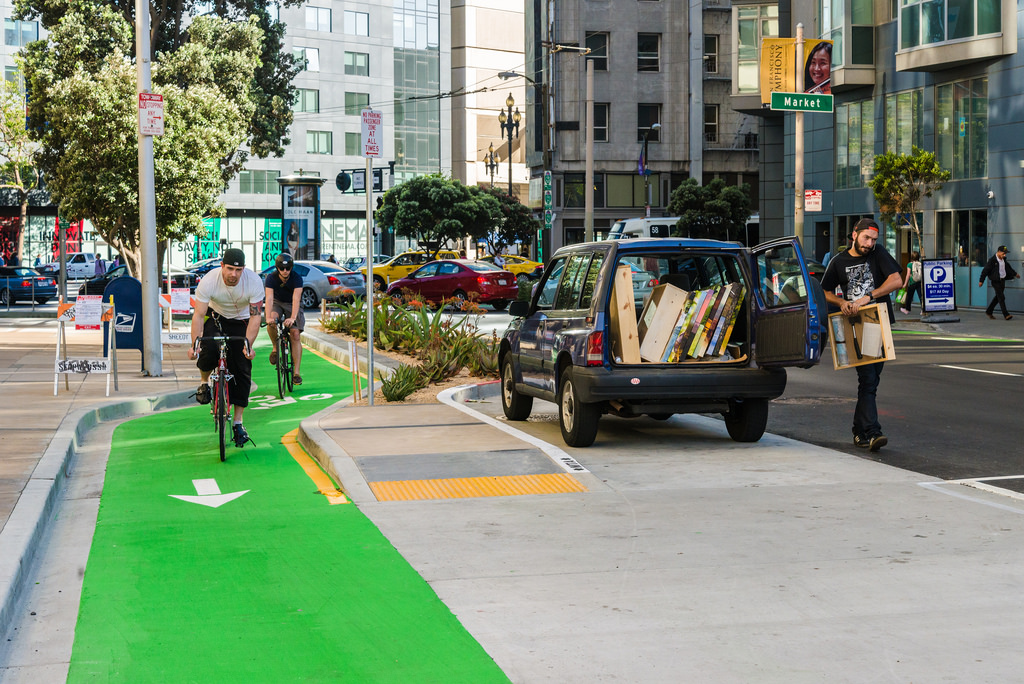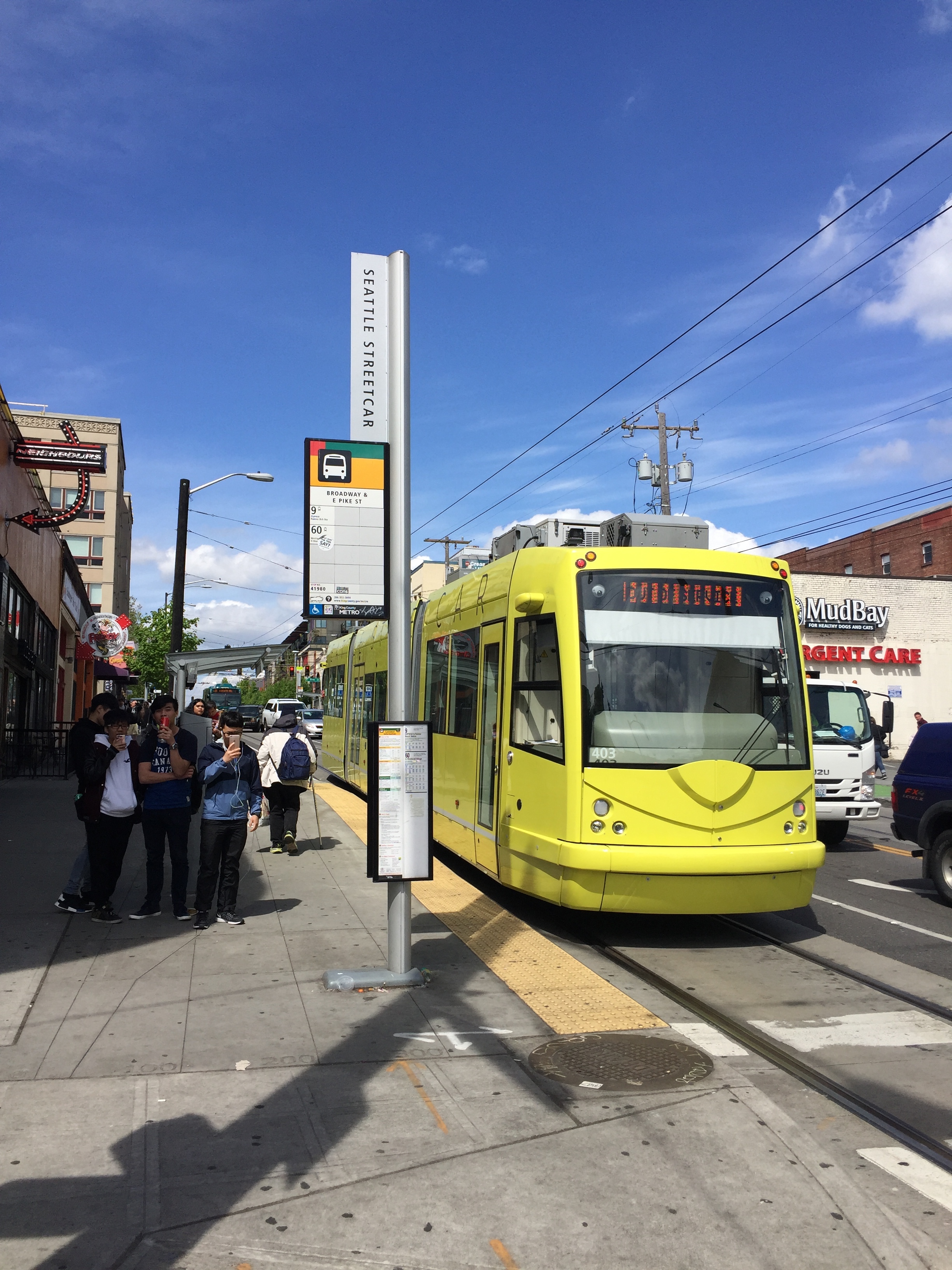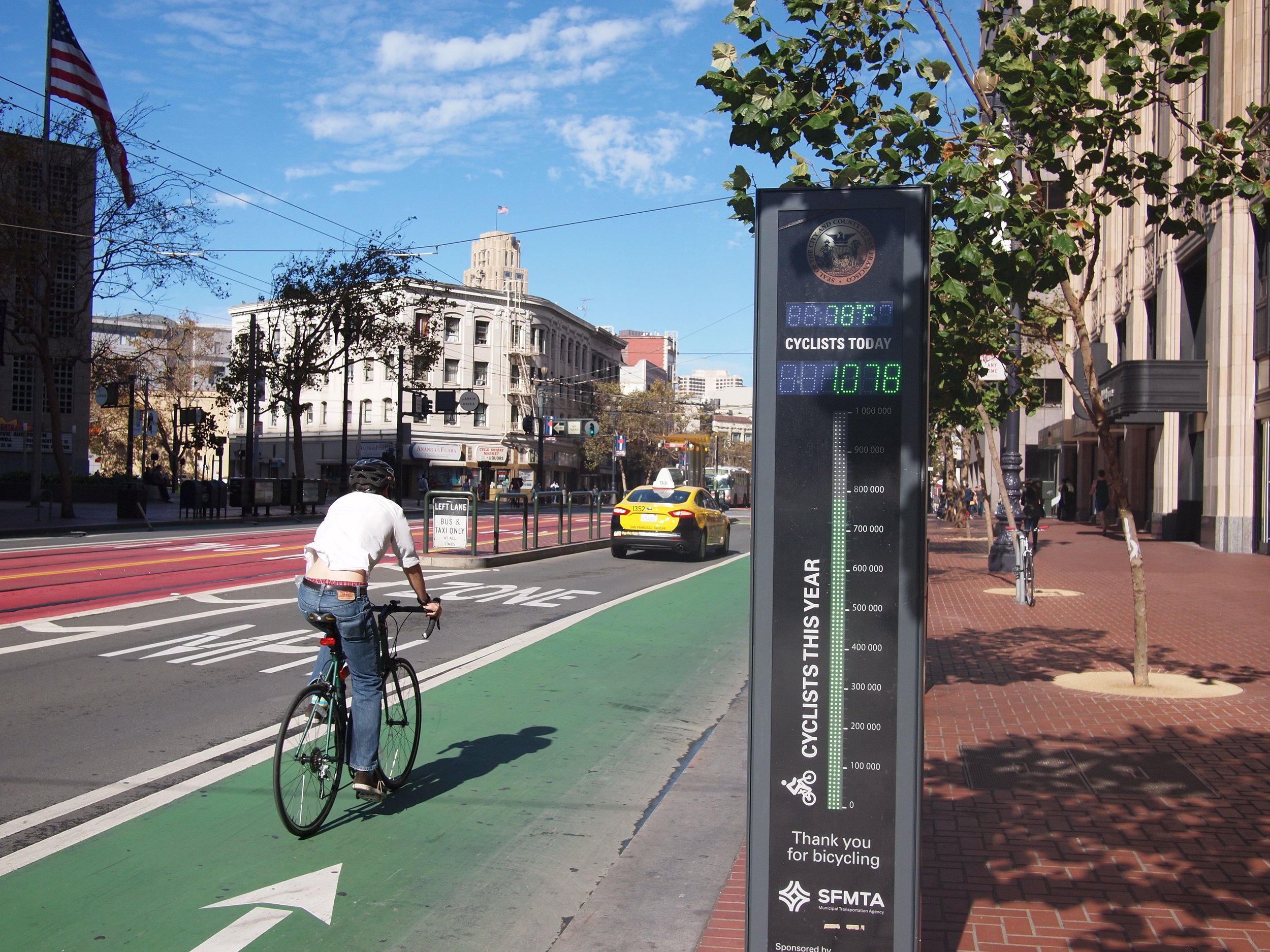We are always in a place even when we are moving. Yet, mobility often overwhelms a sense of place because of vehicle size, noise, exhaust, speed, and poor connections to walking or other modes. Good mobility complements a sense of place by moving at slow speeds, providing quality connections between modes, creating opportunities for human connection, and bringing us to quality destinations.
Connect people moving to the place they are in
Good mobility gets you to great places - and the journey is as tied to place as the destination. The notion of the ‘Sunday drive’ demonstrates that it is possible to enjoy a place as you move through it, but most vehicles are designed to seal us off from the outside world. This distances us from a sense of place, and this distance negatively impacts on our quality of life and health, including impairing our ability to navigate in neighborhoods. Good mobility means moving at slow enough speeds to connect with place, and the sensory ability to see, hear, and smell the place around you.
Design mobility to improve places, not take away
Good mobility should not only minimize negative impacts to place like noise, smog, congestion, and danger, but actively contribute to a sense of place by connecting people to each other, providing a spectacle for people staying to watch, or other innovations for contributing to place that have yet to be tested.
Use moments of transition to make great places
Moments of mobility transition and connection are oftentimes the most important and memorable parts of a journey. Build culture around moments of mobility transition like like bus stops, parking lots, bus depots and other intermodal hubs - even the humble curb, driveway, and parking lots are places to celebrate. Use mobility to activate and connect public spaces.
We can connect to streets as places, even when we are moving through them
“When I drove to school, it seemed like I was just driving and seeing the world through a picture screen or I was in a cinema but when I got out of the car and started biking everywhere, I was inside the moment, it wasn’t just something out there, it was me inside the city, inside people’s lives, inside the stories around us.”

Good mobility means being able to access the needs of your daily life without taking up all the time in your day. Good mobility means getting people to where they need to go with the least amount of speed, cost, neighborhood disruption, and negative impact on personal time, resources, and quality of life.
Consider the entire experience of people moving to reach work, friends, and community
Subsidize place and proximity, not asphalt and highways
Connect people to what they need by creating what they want: access to opportunity and community. A focus on what people want and need will lead to density, location efficiencies, and colocation of neighborhood amenities. Transportation is now the top source of US CO₂ emissions. Accessible local jobs and residential density are the most effective measures for reducing vehicle miles traveled, and emissions along with it.
Start with need, not speed
Starting with what people need and then designing mobility systems around accessing these needs creates mobility that doesn't collapse distance or needlessly increase speed. This approach allows a more equitable distribution of speed for people who need to travel long distances.
Good mobility might mean less moving
Commute time is directly related to overall happiness. Shortening one’s commute by 60 minutes has the same impact on happiness as a $40k raise. The United States average daily commute time is 48.8 minutes, one of the longest average commutes in the world. With longer commutes, most of our free time is spent on sleep, work, and chores, with little time for community, leisure, or new pursuits.
People are actually not very good at thinking about the long-term impact of a longer commute. Some researchers have shown that that people do not make rational trade-offs when they opt for a longer commute to get a bigger house or slightly higher-paying job. People get used to more money or more space thanks to hedonistic adaptation, but the daily commute is, as one researcher put it, "a different hell every day" and we get worse rather than better at handling it. It's not called the daily grind for nothing.
With a people-first approach to mobility and accessibility, we can have shorter commutes and more time for the things we love.
People traveling needlessly long distances means that people have less time for other important things in their lives like family, community, and other economically impactful activities like incubating a business idea
“Transportation should not create division; it should be the solution to past divisions.”

Freedom of movement used to mean speed. Today, it means real choices for all ages and abilities. Real choice in mobility means designing for people first instead of designing for individual modes, and providing access to a variety of right-priced mobility options.
Cars once symbolized freedom with the idea of the open road ahead, but this has led to heavy traffic and gridlock
Design for people first, not a single mode
Most trips consist of at least two transportation modes. For example, drivers are pedestrians when they get out of their cars, and we take a secondary mode of transit to get home from a train or subway. We experience mobility in a series of linked conditions and moments along the way. Good mobility considers the whole multimodal person and makes every mobility choice equally appealing - not only driving. Mobility, when it is designed with people at the center, provides us with an enjoyable quality of life and rhythm. At its best, quality mobility is an integral part of our identity, culture, and habits.
Real choice means equally safe, efficient, reliable, accessible, and affordable for all
For mobility options to be real choices they must be of equivalent quality and accessibility, not just available for the brave or for the wealthy. For active mobility choices like biking or walking to be real options, they must meet these four criteria: Consistent: orientation of walking and cycling paths are simple and user friendly, they are always in a similar orientation to one another (for example, building, sidewalk, cycling path, so a newcomer feels comfortable). Connected: Paths are placed where demand is highest. Continuous: paths are well-integrated with other modes of transportation and continually improved in an ongoing process. Comfortable: paths help users overcome obstacles like intersections and stairs, and help users feel part of the greater whole of the city. And this must be delivered at price points accessible to all. If you solve mobility for the people who need it most, you solve it for everyone.
Balanced cooperation between private and public sectors
Good mobility happens when “public benefit guides private action” and there’s a “balanced collaboration with the private sector that maximizes public benefit.” [1]
We experience mobility in a series of connected moments, often through several different modes
[1] NACTO
Good mobility is about proximity, not speed
Real mobility options are accessible and of equal quality, not just for the brave or those who can afford it
“Americans want choices. 66% of Americans want more transportation options so they have the freedom to choose how to get where they need to go. 73% currently feel they have no choice but to drive as much as they do. 57% would like to spend less time in the car.”

Good mobility includes real shared options. As urban populations increase and streets reach their capacity for private vehicular traffic, achieving more efficient mobility becomes paramount - making shared mobility and mobility that takes up less space (like walking and biking) necessary options. Buses and light rail have remained popular choices in places that maintained those systems, and now more cities are looking to these efficient, shared options to decrease traffic and reduce carbon emissions. Sharing mobility means not only a more efficient, environmentally friendly trip, but a more enjoyable experience because it is in the company of others.
Good mobility shifts focus from the individual experience to a quality, shared system
Individual mobility does not happen in a vacuum. Good mobility must take into account an individual’s impact on the entire system. When we optimize for the individual experience in our current mobility paradigm, we get luxury features that focus on the experience within the vehicle, like butt massagers. What would happen if we looked outside the vehicle and optimized instead for what we really want out of our mobility systems? We might get an enjoyable experience that is as short and slow as necessary.
Mobility is better with others
Moving in the company of others is not only more efficient, it is often more enjoyable. Research shows that people like talking to others even when they anticipate liking alone time more. Biking and other active commutes make people happier, especially when they're longer, while car commuting makes people more anxious and more likely to have negative personal outcomes, like getting divorced. People share vehicles like buses and trains, as well as sidewalk and bike-lane space. We naturally share the streets and the experience improves when we encourage people to used shared modes.
Streets are a shared resource used by different users for a multitude of reasons
“Man is man’s greatest joy.”
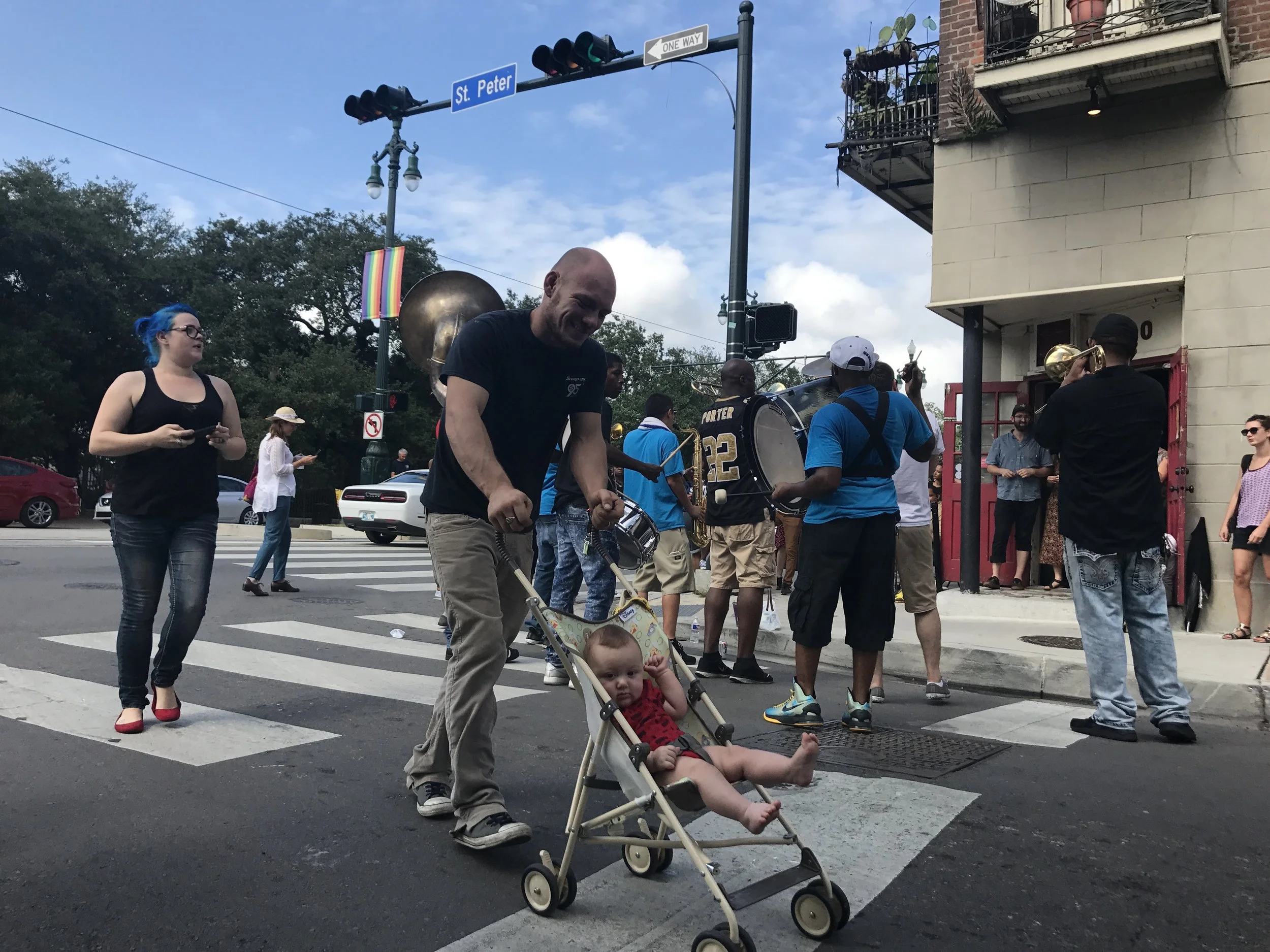
#5 Good mobility allows people to be more human
Good mobility allows people to be more human - not less. Solitary mobility experiences are still part of the range of interaction that should be made possible by mobility, but most current mobility technology only optimizes for these feelings of isolation. Good mobility elevates, doesn’t stifle, the humanity inherent in moving through space.
Design for people's inherent desire to feel a sense of connection
Take advantage of today's historic moment of disruption in the mobility space
With the advent of new mobility technology comes the opportunity to act on our aspirations for human-centered mobility. Vehicle designers should resist pressures to make new technology more distancing from ourselves and others and explore directions in which new mobility technology can melt away, leaving people and place.
Our mobility devices should be as emotive as we are
Good vehicles are as empathetic, expressive and considerate as people are. They respect human attention spans and cater to human desire for empathy and connection. They facilitate real human connection through people watching and opportunities for interaction.
“The trouble is that these new “cars” are all parts and no soul. … There’s no place for people in this new reality except sitting passively inside.”
